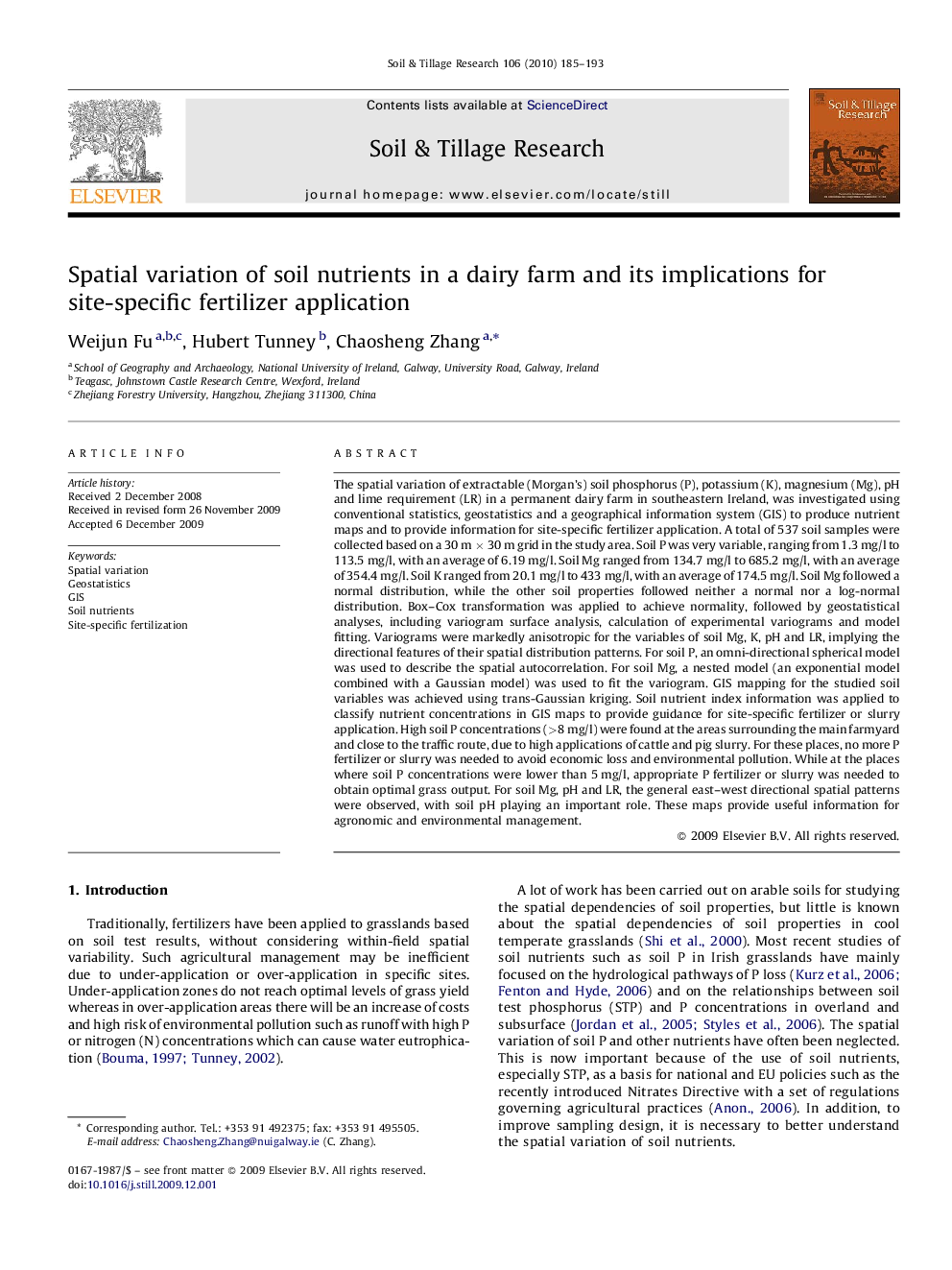| کد مقاله | کد نشریه | سال انتشار | مقاله انگلیسی | نسخه تمام متن |
|---|---|---|---|---|
| 306283 | 513088 | 2010 | 9 صفحه PDF | دانلود رایگان |

The spatial variation of extractable (Morgan's) soil phosphorus (P), potassium (K), magnesium (Mg), pH and lime requirement (LR) in a permanent dairy farm in southeastern Ireland, was investigated using conventional statistics, geostatistics and a geographical information system (GIS) to produce nutrient maps and to provide information for site-specific fertilizer application. A total of 537 soil samples were collected based on a 30 m × 30 m grid in the study area. Soil P was very variable, ranging from 1.3 mg/l to 113.5 mg/l, with an average of 6.19 mg/l. Soil Mg ranged from 134.7 mg/l to 685.2 mg/l, with an average of 354.4 mg/l. Soil K ranged from 20.1 mg/l to 433 mg/l, with an average of 174.5 mg/l. Soil Mg followed a normal distribution, while the other soil properties followed neither a normal nor a log-normal distribution. Box–Cox transformation was applied to achieve normality, followed by geostatistical analyses, including variogram surface analysis, calculation of experimental variograms and model fitting. Variograms were markedly anisotropic for the variables of soil Mg, K, pH and LR, implying the directional features of their spatial distribution patterns. For soil P, an omni-directional spherical model was used to describe the spatial autocorrelation. For soil Mg, a nested model (an exponential model combined with a Gaussian model) was used to fit the variogram. GIS mapping for the studied soil variables was achieved using trans-Gaussian kriging. Soil nutrient index information was applied to classify nutrient concentrations in GIS maps to provide guidance for site-specific fertilizer or slurry application. High soil P concentrations (>8 mg/l) were found at the areas surrounding the main farmyard and close to the traffic route, due to high applications of cattle and pig slurry. For these places, no more P fertilizer or slurry was needed to avoid economic loss and environmental pollution. While at the places where soil P concentrations were lower than 5 mg/l, appropriate P fertilizer or slurry was needed to obtain optimal grass output. For soil Mg, pH and LR, the general east–west directional spatial patterns were observed, with soil pH playing an important role. These maps provide useful information for agronomic and environmental management.
Journal: Soil and Tillage Research - Volume 106, Issue 2, January 2010, Pages 185–193